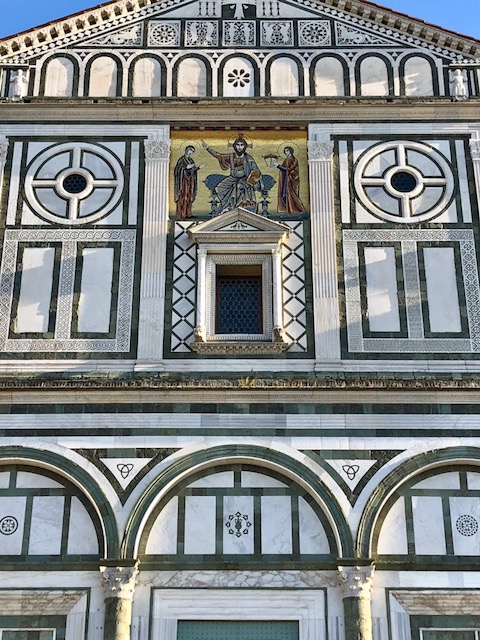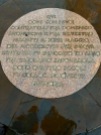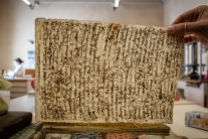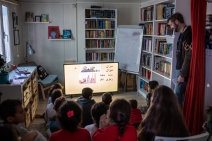11/19/18
TEMPO FORTE: FROM GREECE TO THE RENAISSANCE

On one of our last nights in Athens I spotted a poster for an exhibit about Greece and Italy. It was called Tempo Forte which as a musical term roughly means to “step it up.” Somehow that seemed an appropriate title for our move from Greece to Italy. After an all-day plane ride via Frankfurt we arrived in Naples. Coming from Athens, this city seemed to be just as crowded, chaotic and exciting. On our first night there we learned how late at night the Napolitanos eat dinner and what Italian kids wear for Halloween.
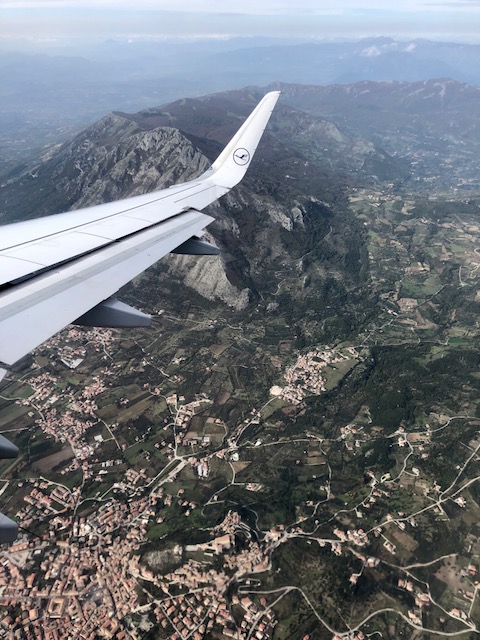
Our neighborhood was really hilly with lots of steps and funicolares. The sidewalks were better than Athens but the traffic was just as crazy. Everyone still smokes. As I wrote to our son Walker “We had good pizza last night at 7:30 and we were the only ones in the café. Most places don’t even open until 8PM but we had been up since 3AM and were desperate to find something to eat and then collapse. We had waited the hour before at an outdoor wine bar watching the trick-or-treaters and chatting with our neighbors. Ellen almost got run over by a car trying to squeeze by her on the narrow alley sidewalk as we sipped our wine. The drunk woman at the next table said “Ah, Napoli!”
Naples is a great city for walking and the next afternoon and evening we wandered up and down, far and wide. We turned a corner at one point and found ourselves staring at massive Mt. Vesuvius across the bay.
One great neighborhood was the old Spanish district “Quartieri Spagnoli”and the jammed shopping street call Via Toledo. The area has tiny little streets and great shops tucked away. We stumbled upon a great café/bar with an astonishing selection of beers and bar food. I fell in love with Naples right there.
Part of coming to a new country is trying to figure out how to use your cell phone and how to navigate the subway. After we accomplished that we made our way to the National Archeological Museum. What a treasure! Like the one in Athens, this was filled with the best of the national archeological treasures including much of what had been discovered over almost 200 years in nearby Pompeii. It was breath taking and I stared in amazement at the recovered papyri from the House of the Papyri in Pompeii. This was the only complete library recovered from the ancient world. Like in Thessaloniki, it only survived by being destroyed under a huge layer of volcanic ash during the famous eruption of Vesuvius. These charred ruined pieces of the papyrus rolls have slowly been recovered over the last two centuries. It was also amazing to look into the faces of the ancients in the paintings and sculptures recovered from Pompeii. They even had busts of famous writers and philosophers that had been placed next to the papyrus rolls that they had written. Imagine that!

The Biblioteca Nazionale Vittorio Emanuele III is our host library in Italy. It is housed in an old palace in Naples and feels very different from the brand-new National Library in Greece. It is a big, sprawling complex filled with books and treasures. Our private tour took many hours and I realized that I would be spending a lot of time photographing in this massive place. Some of the treasures include many more papyri from Pompeii, ancient globes and other items from the royalty that formerly lived here. It even included an incredible room filled with hunting trophies from a safari taken by one of the princesses.

After several days in Naples we took a train up to the north-central part of Italy to the magical city of Florence. The trains are efficient and practical and the three-hour ride through the Tuscan landscape was beautiful. This is considered one of the birthplaces of the Renaissance and it feels like it. The area around the Duomo is uncomfortably swarming with tourists but the history is astonishing and I felt very close to it. There was even a plaque at our feet showing the spot where the Inquisitionist Savonarola burned books and other items in the famous “bonfire of the vanities” and who was later executed here as well.
The next day we got up early and spent the morning at the Uffizi Gallery before the crowds showed up. This was Florence at its best and the amount of great art work there was staggering.
One of the most amazing libraries we have seen so far is the Biblioteca Laurenziana. The library was completed in 1534. The entrance was designed by Michelangelo and was dark and mysterious. The interior was spacious and had many wooden carvings of antelope skulls reminiscent of American Western iconography. We later went to a contemporary exhibition of “Voices of Women” curated from the library’s vast archives.


The next day we went to the Harold Acton Library at the British Institute in Florence. It is a cultural institution founded in 1917 promoting Anglo-Italian culture and contains a library of English books. It is the oldest overseas British cultural institute in the world and wonderfully reflected English culture.
We also visited the German Kunsthistorisches Institut in Florenz which is a part of the Max Planck Institut. Like the Acton Library this is a form of “soft power” in Italy. Established in 1897 it is one of the oldest research institutions dedicated to the history of art and architecture in Italy. This was more of a true research center while the Acton Library was more of a reading room and social gathering spot.
Finally, we visited the National Central Library in Florence. This is one of three National Libraries in Italy (the other two are Rome and Naples) and is the largest in Italy and most important in Europe. In 1966 a major flood damaged or destroyed nearly 1/3 of its holdings. The Restoration Laboratory is housed in an old convent, and we were given an extensive three-hour tour of the lab and the library. The Library was completely unprepared for the flood and what they learned from their emergency response efforts has shaped the modern field of book conservation and preservation throughout the world. They are still working all these years later to repair the damage to their collection, and to anticipate the next flood!
On our last day in Florence we took the day off and just wandered. We discovered many unexpected beautiful things including a 1,000 year old church with an astonishing cemetery. We also saw the quiet beauty of this place away from the tourist insanity and would love to come back asap.

